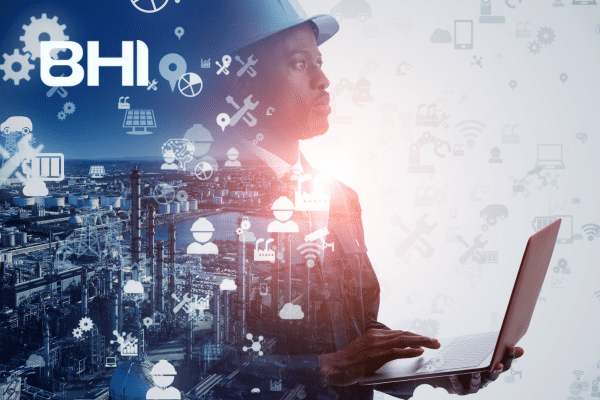The industrial world is experiencing unprecedented evolution, radically transforming how companies design, produce, and distribute their products. We now stand at a decisive crossroads between the fourth industrial revolution and the emergence of a fifth paradigm.
While Industry 4.0 emphasized digitization, interconnection, and automation of processes, Industry 5.0 introduces a fundamentally new dimension: the reintegration of humans at the heart of advanced technological systems, while placing environmental sustainability at the center of concerns.
Understanding Industry 4.0 — Foundations and limitations
The technological pillars of industrial digital transformation
Industry 4.0 rests on four fundamental pillars: the Industrial Internet of Things (IIoT) with over 4.8 billion connected devices in 2024, Big Data and advanced analytics transforming data into actionable insights, automation and robotics enabling autonomous production lines, and finally cloud computing and cyber-physical systems merging the virtual and physical worlds.
Benefits brought by digital transformation
Digital transformation has generated considerable benefits: process optimization with efficiency gains of up to 35%, reduced operational costs with inventory cut by 20% according to the World Economic Forum, improved quality with defects reduced by up to 60%, and increased flexibility enabling mass customization.
Limitations of the current model
Despite its advantages, Industry 4.0 presents significant limitations. The disconnect between humans and technology is evident, with only 14% of employees engaged in highly automated environments. Ethical and social questions remain insufficiently addressed, while the environmental dimension is often neglected. Integration complexity and rapid technological obsolescence also represent major challenges.
The advent of Industry 5.0 – A human-centered revolution
Definition and fundamental principles
Industry 5.0, formalized by the European Commission in 2021, represents a fundamental paradigm shift. It rests on three key principles: human-machine collaboration that increases productivity by 40% while improving job satisfaction, sustainability as a strategic imperative promoting a circular approach, and advanced customization adapting in real-time to customer needs.
Key technologies
This new approach relies on advanced technologies that transcend the capabilities of the previous model. Collaborative artificial intelligence plays a central role, with projected growth of 25% per year until 2027. Cobotics transforms the work environment, while advanced digital twins and intuitive human-machine interfaces facilitate collaboration. Green technologies are now natively integrated into production systems.
Expected benefits
Industry 5.0 promises significant benefits across multiple dimensions: improved employee well-being with 28% additional engagement, reduction of environmental footprint potentially reaching 20% of CO2 emissions by 2030, accelerated innovation thanks to the liberation of human capabilities, and increased resilience in the face of global disruptions.
Challenges in transitioning to Industry 5.0
The transition to this new paradigm presents challenges on three main levels:
Technological challenges
Integration of existing systems constitutes a major obstacle, with 78% of current ERPs not natively adapted to Industry 5.0 principles. Data management and interoperability also pose problems, with only 32% of companies having a sufficiently mature architecture. Cybersecurity becomes more critical with the increasing interconnection of systems.
Organizational and human challenges
Developing new skills is essential, with 50% of manufacturing sector employees requiring training by 2025. Transforming corporate culture and reorganizing decision-making processes toward more horizontal structures are also crucial, allowing for a 34% improvement in decision-making speed.
Economic and strategic challenges
The necessary investments and their returns constitute a major concern for leaders. Reevaluating business models toward servicization or sustainability as a competitive advantage becomes indispensable. Compliance with new regulations such as the Green Deal, AI Act, or CSRD represents an additional challenge.
JD Edwards EnterpriseOne — The ideal ERP solution for Industry 5.0
Architecture and flexibility adapted to future challenges
Our JD Edwards solution stands out for its deployment flexibility (on-premise, private, public or hybrid cloud), its compatibility with various infrastructures, and its modularity with over 80 functional modules. This adaptability enables companies to adopt a progressive transformation strategy.
Key functionalities for the industry of the future
The solution integrates specialized modules such as Manufacturing Management and Environmental Accounting, advanced reporting capabilities via Oracle Analytics Cloud, mobile solutions promoting operational agility, and customization tools allowing the solution to be finely adapted to each company’s specific needs.
Competitive advantages for the transition
Oracle guaranteed stability until at least 2031 ensures a secure long-term investment. Our partner ecosystem provides essential expertise to align implementation with your strategic objectives. Companies using this solution achieve an average ROI of 18% over three years, demonstrating its tangible value.
BHI Consulting’s methodology for successful implementation
A proven strategic approach
Our approach begins with identifying pain points and transformation opportunities, followed by precise alignment between strategic objectives and technical implementation. Our catalog of standard processes, drawn from over 200 projects, significantly accelerates the design phase.
Adapted project management methodology
Our methodology is based on user-centered collaborative workshops, convergence toward international best practices, agile governance with iterative implementation cycles, and integrated change management recognizing the human dimension as a critical success factor.
Specialized support services
We offer services adapted to each stage of your transformation: in-depth sector expertise, modernization of existing systems, harmonized international deployment, and continuous support ensuring the durability and evolution of your system.
Preparing your roadmap to Industry 5.0
Preparing your transition begins with an objective assessment of your current digital maturity, followed by constructing a coherent transformation strategy with a clear vision and measurable objectives. We recommend starting with high-impact pilot initiatives, while progressively developing the necessary skills and establishing performance indicators adapted to this new industrial vision.
Conclusion
The transition to Industry 5.0 represents a profound transformation that reinvents the relationship between humans, technology, and the environment. To successfully navigate this decisive turn, your company must rely on solid technological foundations like JD Edwards EnterpriseOne, combined with the expertise of an experienced integrator.
This evolution is not an option but a strategic necessity in a world where innovation accelerates and societal and environmental expectations strengthen. Companies that effectively embrace this change will create sustainable value for all their stakeholders.
Ready to begin your transformation toward the industry of the future ? Our experts are at your disposal to support you in this strategic approach.

















